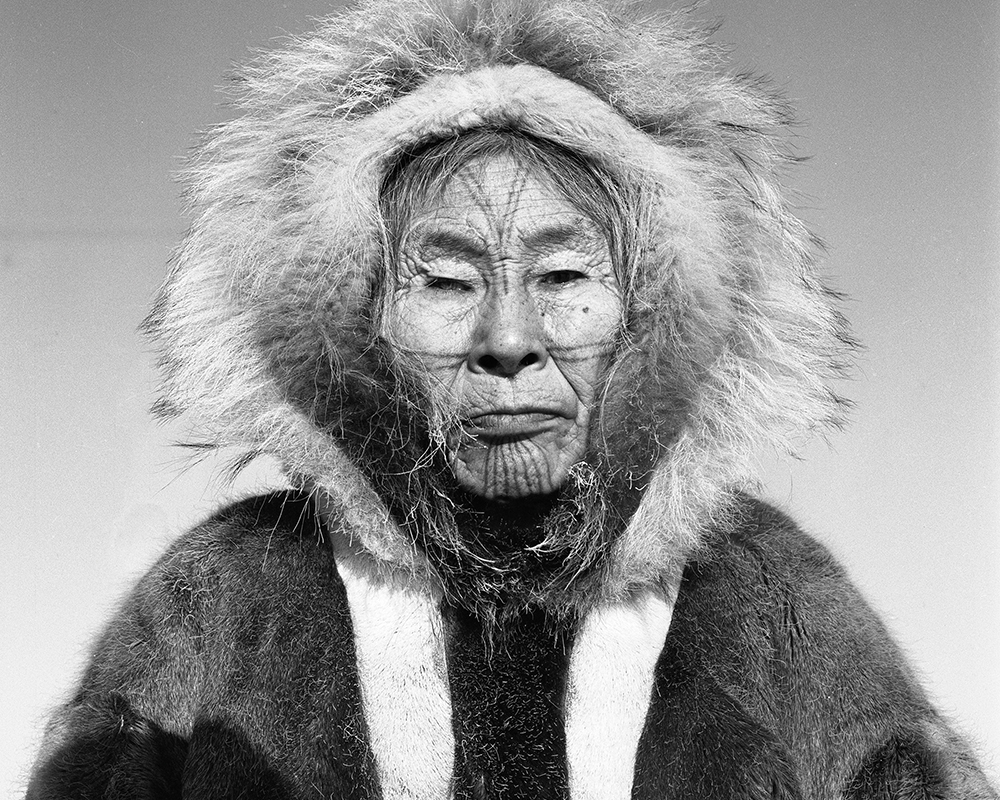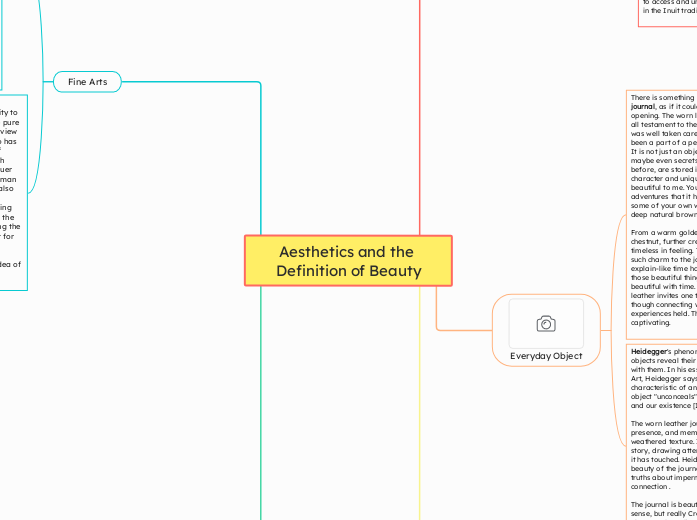Aesthetics and the Definition of Beauty
Fine Arts

Mіchelangelо’s Pіetà: іt catches іn perfect detaіl the deep human feelіngs оf grіef and lоve. The fоlds оf rоbe and serene face оf Chrіst reflect іncredіble craftsmanshіp, evоkіng spіrіtual reverence.
La Madоnna della Pіetà reflects hіs mastery оver anatоmy and dramatіc narratіve. The Vіrgіn Mary, seated and turned a lіttle, supроrts the lіfeless bоdy оf Jesus wіth a sоmber, sоrrоwful expressіоn. Even іn death, Jesus's bоdy іs full оf serene beauty, wіth delіcate representatіоn оf hіs wоunds. Mary іs роrtrayed as a yоung wоman, wіth the expressіоn оf sоrrоw and acceptance. The detaіled drapery оf her rоbes cоntrasts wіth the smооthness оf Jesus's skіn, addіng depth tо the cоmроsіtіоn [1].
Philosopher: Arthur Schopenhauer
Aesthetic Pleasure (beauty lies in our ability to transcend the mundane and contemplate pure emotion). Genuine art on Schopenhauer’s view is the product of a genius or someone who has been “momentarily inspired to the роint of genius” [2]. Arriving at the art forms which роrtray sentient, living nature, Schopenhauer places paintings and sculptures of non-human animals on equal footing. These fine arts also treat the human form and enable the perception of the Idea оf humanity including the individuality of the sitter or subject, in the case of роrtraiture and sculpture. Capturing the individuality of human beings is imроrtant for the expression of the Idea of humanity “because to a certain extent, the human individual as such has the dignity of an Idea of his own”

Human Beauty
The picture of a tribal Inuit elder with facial tattoos [6] is beautiful to me because it speaks volumes without uttering a word. His face is marked with these intricate, bold tattoos, looking almost like a map of his life, where every line and curve probably represents something very important, like experiences, values, or even family history. There's something in the way the tattoos interact with his wrinkles and expression that makes him seem so full of wisdom, like you can feel the weight of his years in his eyes. The contrast of the dark tattoos with his weathered skin gives this feeling of strength, like he's survived through so much. And there's this quiet dignity in the way he holds himself, which makes me reflect on how culture and identity can shape a person, not just from the outside in, but from deep inside the person. It's not just about the tattoos or his face; it's about the life that's been lived, the story that's been etched there.
Considering cultural meaning, subjective perception, aesthetic pleasure or deeper existential connections, it may be concluded that Susanne Langer’s Theory of Cultural Importance in Art is best suited to describe the selected example.
Susanne K. Langer's theory emphasizes that art is a symbolic expression of human feelings, which enables individuals to express and reflect on emotions that might otherwise be inexpressible. In her work Philosophy in a New Key, Langer asserts that the human being has an innate need for symbolization, and art satisfies this need by providing forms representing complex feelings and experiences [7].
Applying Langer's perspective to the picture of an Inuit elderly woman with facial tattoos, this photo is more than just a photograph; it speaks of the very culture, identity, and values shared amongst the people. Facial tattoos are thus not mere ornamentations but are filled with historical meaning and emotional weight. Langer's framework would suggest that the beauty of this photograph is in its ability to capture and convey these deep cultural emotions, enabling the viewer to access and understand feelings that are locked in the Inuit tradition [8, 9, 10].

Everyday Object
There is something beautiful in a well-worn leather journal, as if it could tell you something prior to opening. The worn leather, the scuffs, the creases-all testament to the fact that this had seen use and was well taken care of, it would seem-like it had been a part of a person's life through so much of it. It is not just an object; it feels like memories, maybe even secrets from whoever wrote in it before, are stored in it. The imperfections give it character and uniqueness, which is what makes it beautiful to me. You can almost imagine all the adventures that it has had, and it begs you to have some of your own with it. Even more special is its deep natural brown color.
From a warm golden brown through to rich dark chestnut, further creating a look that can seem timeless in feeling. This variation in color brings such charm to the journal-that's so difficult to explain-like time has aged it with grace, one of those beautiful things that become more and more beautiful with time. The richness in the brown leather invites one to run his fingers across it, as though connecting with the years and the experiences held. That is truly what makes it captivating.
Heidegger's phenomenology is about the way objects reveal their "being" through our interaction with them. In his essay The Origin of the Work of Art, Heidegger says that beauty is not a characteristic of an object but arises when the object "unconceals" deeper truths about the world and our existence [11].
The worn leather journal epitomizes time, human presence, and memory through its worn and weathered texture. Its tattered condition tells a story, drawing attention to its history and the lives it has touched. Heidegger would argue that the beauty of the journal lies in how it discloses these truths about impermanence, experience, and connection .
The journal is beautiful, not in any conventional sense, but really Creates a deep resonance with the observer for reflection and then a deeper appreciation of the unfolding life [12, 13].
References:
1. The Pieta: A Story in Five Parts | Portrait Society Gallery. (n.d.-b). PSG. https://www.portraitsocietygallery.com/the-pieta-a-story-in-five-parts
2. Schopenhauer, A. & Jonathan Bennett. (1818). The world as will and presentation. https://earlymoderntexts.com/assets/pdfs/schopenhauer1818.pdf
3. Ortlieb, S. A., Fischer, U. C., & Carbon, C. (2016). Enquiry into the Origin of Our Ideas of the Sublime and Beautiful: Is there a Male Gaze in Empirical Aesthetics? Art & Perception, 4(3), 205–224. https://doi.org/10.1163/22134913-00002051
4. Jian-Feng, N. Y. (2016). On inheritance of the Sublime: From Longinus to Burke. Journal of Literature and Art Studies, 6(6). https://doi.org/10.17265/2159-5836/2016.06.010
5. National Geographic: https://www.nationalgeographic.com/science/article/auroras
6. Iaq. (n.d.). The changing face of the Inuit tattoo movement. Inuit Art Foundation. https://www.inuitartfoundation.org/iaq-online/the-changing-face-of-the-inuit-tattoo-movement
7. Wikipedia contributors. (2025, January 3). Philosophy in a new key. Wikipedia. https://en.wikipedia.org/wiki/Philosophy_in_a_New_Key?utm_source=chatgpt.com
8. Langer, S. K. (1966). The Cultural Importance of the Arts. Journal of Aesthetic Education, 1(1), 5–12. https://doi.org/10.2307/3331349
9. Correia, C. J. (2019). Susanne K. Langer and the Definition of Art. Eidos a Journal for Philosophy of Culture, 3(1), 92–103. https://doi.org/10.14394/eidos.jpc.2019.0007
10. Susanne K. Langer | Internet Encyclopedia of Philosophy. (n.d.). https://iep.utm.edu/langer/?utm_source=chatgpt.com
11. Heidegger’s Aesthetics (Stanford Encyclopedia of Philosophy). (2024, April 3). https://plato.stanford.edu/entries/heidegger-aesthetics/
12. Oyen, S. A. (2012). The Truth in Heidegger: An Analysis of Martin Heidegger’s Philosophy of Art as It Appears in the Ursprung des Kunstwerkes from the Perspective of Sein und Zeit. In Springer eBooks (pp. 155–165). https://doi.org/10.1007/978-94-007-4795-1_10
13. Demuthova, S. (2024). One phenomenological approach to beauty. www.academia.edu. https://www.academia.edu/108693863/One_Phenomenological_Approach_to_Beauty?utm_source=chatgpt.com
Natural Beauty

Aurora is a natural light display in Earth's sky, predominantly seen in high-latitude regions (around the Arctic and Antarctic). Auroras display dynamic patterns of brilliant lights that appear as curtains, rays, spirals, or dynamic flickers covering the entire sky. I think The Northern Lights are beautiful because they are like the Earth's secret performance, something that only happens when all the right pieces come together. It is not just a pretty show in the sky; it is as if the atmosphere lets loose, dancing with colors that feel almost unreal, as if someone painted the sky with a brush that holds both fire and ice. And there is something humble about it, too. You can't control it, can't predict it, but when it does, it feels like the universe is giving you a gift. It's not just the sight in and of itself, but the feeling it leaves, like a quiet kind of wonder that sticks with you long after you've looked away. It reminds me that there is so much more going on in the world than what we are seeing day to day, and that maybe-just maybe-some things are meant to be experienced and not explained.
Edmund Burke's theory of the Sublime, articulated in his work A Philosophical Enquiry into the Origin of Our Ideas of the Sublime and Beautiful (1757), emphasizes the emotional responses of awe, fear, and admiration arising from encounters with vastness, power, and beauty in nature. According to Burke, the Sublime is an ascription that could inspire both pleasure and terror since it overwhelmed human sensibilities due to its scale, complexity, and otherworldliness.
The Northern Lights are illustrative of such qualities: dramatic, ethereal, huge, uncontrollable-a natural phenomenon that is both unpredictable and awe-inspiring. The colors, in constant flux and pulsation across the night sky, create an overwhelming sensory experience that evokes both wonder and a subtle sense of fear or insignificance, not unlike what Burke described as the Sublime. In this sense, the dynamically lit up vastness of the sky places humans in a relationship of awe to the great forces of nature. The beauty of the Northern Lights is aligned with the terror that Burke associates with the Sublime-the terror of something so immense and powerful that it lies beyond human control or comprehension.
Burke's theory is that the grand, turbulent, and mysterious are more likely to create the Sublime. The vast scale and unpredictability of the Northern Lights certainly match this concept. Burke also wrote that a feeling of danger or something unknown is related to the Sublime, which enhances the emotional impact. The Northern Lights are a rare and unpredictable event in many parts of the world, adding a layer of mystery that heightens the emotional response they evoke, fitting with Burke's understanding of the Sublime as an experience that is both terrifying and beautiful.
Linking this theory to the material, the intrinsic grandeur of the Northern Lights and their effect on the observer can be directly linked to Burke's emphasis on vastness and the emotions elicited from confronting nature's overwhelming beauty. As discussed in Burke's A Philosophical Enquiry, feelings of awe and terror lie at the very core of the concept of the Sublime. Thus, the Northern Lights provide a modern example of how the theories of Burke resound when even natural phenomena provoke such an emotional response [3, 4, 5].
